Top Destination
Mill Waters
Kings Mill Reservoir, Sutton in Ashfield, NG17 4PA
 Mill Waters is found between Ashfield and Mansfield and covers three public open spaces providing a snapshot of the industrial, social and natural heritage along the River Maun Corridor. The three connected sites at Mill Waters offer over 70 hectares to walk, run, and cycle. Visitors can try out many recreational activities including tennis, a skate park, play facilities, and outdoor fitness, within a relaxing, friendly environment. The cafés at the sites provide homemade food and beautiful views at Kings Mill Reservoir and Sutton Lawn
Mill Waters is found between Ashfield and Mansfield and covers three public open spaces providing a snapshot of the industrial, social and natural heritage along the River Maun Corridor. The three connected sites at Mill Waters offer over 70 hectares to walk, run, and cycle. Visitors can try out many recreational activities including tennis, a skate park, play facilities, and outdoor fitness, within a relaxing, friendly environment. The cafés at the sites provide homemade food and beautiful views at Kings Mill Reservoir and Sutton Lawn Investment of £1.45 million has been put into Mill Waters to enhance green spaces along the river corridor, connect people with local heritage, and celebrate the story of the mill industries that were once a major hub of activity and employment in the area. This has been made possible thanks to the National Lottery Heritage Fund, Ashfield District Council, Mansfield District Council, and Nottinghamshire County Council.
Investment of £1.45 million has been put into Mill Waters to enhance green spaces along the river corridor, connect people with local heritage, and celebrate the story of the mill industries that were once a major hub of activity and employment in the area. This has been made possible thanks to the National Lottery Heritage Fund, Ashfield District Council, Mansfield District Council, and Nottinghamshire County Council.
Learn more about the Mill Waters area by downloading the Mill Waters site map.
Telephone: 01623 556110
Email: Mill Waters
How to get there
By car: Exit at Junction 28 on the M1. Follow the A38 and come off at the A617 Sherwood Way South.
By train: Sutton Parkway station, Sutton in Ashfield, NG17 5FB.
Parking: There are two main car parks at Mill Waters. One is at Sutton Lawn accessed off Station Road, via Lawn Avenue. The second is at Kings Mill Reservoir accessed off Sherwood Way South that leads down the access drive to the car park.
Volunteer at Mill Waters
Would you like to become part of the volunteer team at Mill Waters to learn fresh skills, make new friends and enjoy the great outdoors? Volunteer opportunities include volunteer ranger; event volunteer; heritage and conservation volunteer; information and design volunteer; survey volunteer and volunteer walk leader.
Fill in a volunteer enquiry form
Email for more information about volunteer roles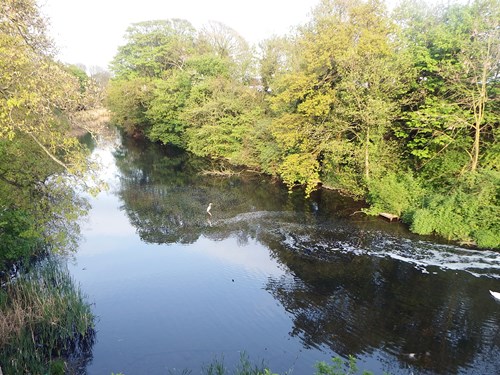 LEARN ABOUT THE KINGS MILL RESERVOIR LEISURE DEVELOPMENT
LEARN ABOUT THE KINGS MILL RESERVOIR LEISURE DEVELOPMENT
The Kings Mill Reservoir flagship project for a new boathouse with meeting room and restaurant space will be an important catalyst to boost night time economy in the area. It will bring opportunities for events and meeting space, as well as growth in water sports and recreational activities.
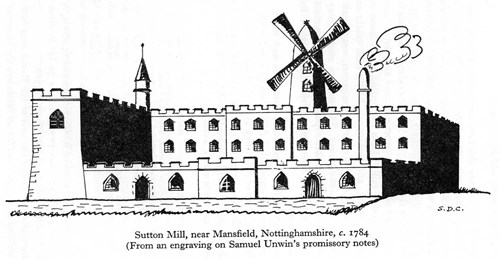 READ THE HISTORY OF MILL WATERS
READ THE HISTORY OF MILL WATERS
Mill Waters today is a peaceful haven for wildlife filled with leisure activities, but in the early 19th century the area was a thriving manufacturing hub.
DISCOVER WILDLIFE AT MILL WATERS
Every season throughout the year at Mill Waters there is something different to see in nature with a variety of wildlife, birdlife, and insects. In winter, you can often hear the woodpecker before seeing it. This cheerful bird drums on trees to establish its habitat, as woodpeckers don’t have a song to advertise themselves. They have strong bones in their skulls and small air pockets that prevent them from getting a headache from all the hammering. Woodpeckers dine mostly on insects, but will also eat acorns, nuts, fruit, sap, berries, and pine seeds. In autumn, they may add woodland berries to their diets. They are most likely to be heard between January and April.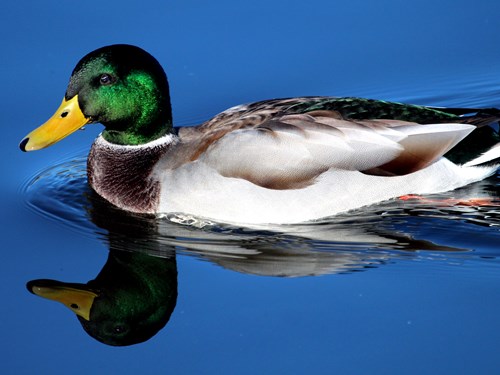
There are a variety of diving ducks at Mill Waters who survive by diving into shallow water to scoop up plants and insects. Ducks have waterproof feathers that means even when they dive deep beneath the water, the feathers closest to their skin stay completely dry. The sociable pochard duck can often be seen mixing in large flocks of diving ducks in the winter. Strangely these birds are silent apart from when they are courting – the male will whistle and the female ‘squack’. It is listed as a vulnerable species due to its declining population.
In winter and spring, male pochards have a bright reddish-brown head, a black breast and tail, and a pale grey body. Females are brown with a greyish body and pale cheeks. After the breeding season the ducks grow new feathers, and for about a month they can’t fly. During this so called ‘eclipse season’, the males become more camouflaged like the females so they don't draw the attention of predators. By October, they have their original colour of feathers back.
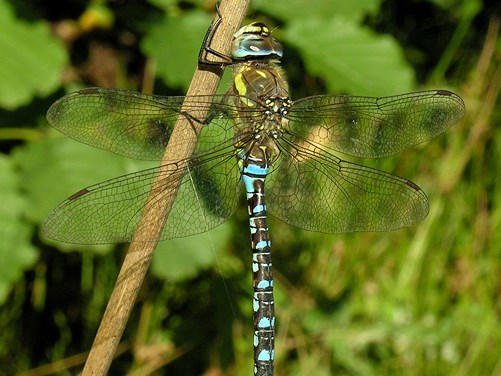 Autumn brings dragonflies and damselflies that are invertebrates that hover above the water in the reedbed in search of prey, including bloodworms, snails, water fleas, tadpoles, and the larvae of mosquitoes or other aquatic insects. Their large eyes are made up of thousands of six-sided units and they can detect the slightest movement with their excellent vision. Dragonflies are not actually a fly, even though they both have six legs and three body parts including a head, thorax, and abdomen. The main difference is that flies only have two wings, whereas dragonflies have four wings. Dragonflies are different from damselflies as their wings are outstretched at rest. Look out for the migrant hawker dragonfly and the common blue damselfly between July and October.Migrant hawker dragonfly
Autumn brings dragonflies and damselflies that are invertebrates that hover above the water in the reedbed in search of prey, including bloodworms, snails, water fleas, tadpoles, and the larvae of mosquitoes or other aquatic insects. Their large eyes are made up of thousands of six-sided units and they can detect the slightest movement with their excellent vision. Dragonflies are not actually a fly, even though they both have six legs and three body parts including a head, thorax, and abdomen. The main difference is that flies only have two wings, whereas dragonflies have four wings. Dragonflies are different from damselflies as their wings are outstretched at rest. Look out for the migrant hawker dragonfly and the common blue damselfly between July and October.Migrant hawker dragonfly
Funghi is a type of organism that is commonly referred to as mushrooms and toadstools. They are different from plants as they do not pollinate and feed off decomposing matter. Some funghi can be poisonous or fatal if eaten, so please do not touch any of the funghi around Mill Waters.
Look out for these two species around the Mill Waters site. Fly agaric is famous for its bright red cap; it can grow to 20cm across and 30cm high. It is inedible because of its psychoactive and hallucinogenic properties. It featured in the story Alice in Wonderland and was used on Victorian and Edwardian Christmas cards as a symbol of good luck. Look out for fly agaric from late summer to early winter. Common bonnet (Mycena) is a mushroom that looks like a small, brown hat, and its name comes from the hats worn by the ancient Greek Mycenae. It has flat or upturned edges and distractive toothed gills. Its colour varies and it is known as the ‘rosy gill fairy helmet’. It can be found growing in clusters on rotted wood and tree stumps. The cap grows up to 5cm across and 8cm high. It can be found year-round, but is more likely to be seen in summer and autumn. It is not suitable to eat.
In spring, there is the common merganser, which is a diving duck named because of their long-serrated bills for catching slippery fish. Male birds are white, with dark green heads, black backs, and long, red, hooked bills. Females are grey, with a gingery or reddish-brown head and a white throat.
The mute swan has an all-white body and a reddish-orange bill that has a black tip at the base. Visitors can admire them gliding serenely across the reservoir, dipping their long necks in the water to feed on the vegetation and molluscs beneath. Don’t get too close, as the males in particular can be aggressive if they feel threatened. Please don’t feed bread to the swans. Most of the year they have sufficient food from the reservoir. An exception may be made during the winter months when vegetation may be scarce – they may then appreciate lettuce, spinach, cooked cabbage, cracked corn, whole oats, cooked rice, and steamed vegetable peelings.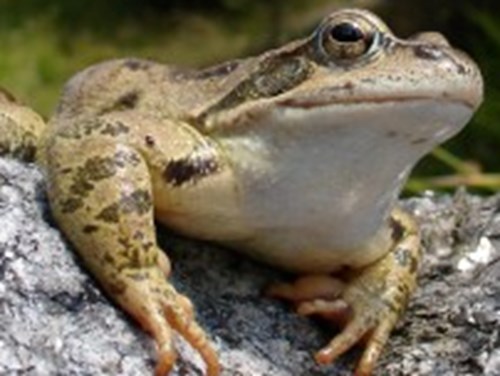 The summer months are when visitors will come across frogs and toads living in and around small ponds at the Mill Waters site. You can tell them apart as toads have a browner, warty skin compared to the olive green frog. The female frog may be more reddish in colour. Frogs also tend to hop around, as opposed to the toad which prefers to crawl. Look out for frog and toad spawn in pools around the heritage site from late spring. Frogspawn lies in clumps beneath the surface, whereas toadspawn is in a long chain wound around greenery. Toadlets can emerge from ponds in huge numbers during early summer, usually after rain.
The summer months are when visitors will come across frogs and toads living in and around small ponds at the Mill Waters site. You can tell them apart as toads have a browner, warty skin compared to the olive green frog. The female frog may be more reddish in colour. Frogs also tend to hop around, as opposed to the toad which prefers to crawl. Look out for frog and toad spawn in pools around the heritage site from late spring. Frogspawn lies in clumps beneath the surface, whereas toadspawn is in a long chain wound around greenery. Toadlets can emerge from ponds in huge numbers during early summer, usually after rain.
Summer is also the time for wildflowers to thrive that not only brighten up the landscape, but also serve a vital function to provide pollen for bees and nutrients for butterflies and many other insects to survive. Through our management plan we have planted a variety of wildflowers around the site to help make the area more attractive to a range of wildlife. Notable species include lady’s bedstraw, which has a delicate honey-scented yellow flower. Its name harks back to medieval times when dried grasses would be used to stuff mattresses. The common yarrow attracts butterflies with its soft, feathery leaves and pungent scent. It was traditionally used to treat wounds and for other medicinal purposes. Cornflower is a pretty, bright blue flower that appears on long stalks during the summer. Look out for the bees and butterflies feeding off its nectar.
BIRDS AT MILL WATERS
Birdwatching is a popular pastime and there are many birds to look out for when visiting Mill Waters. 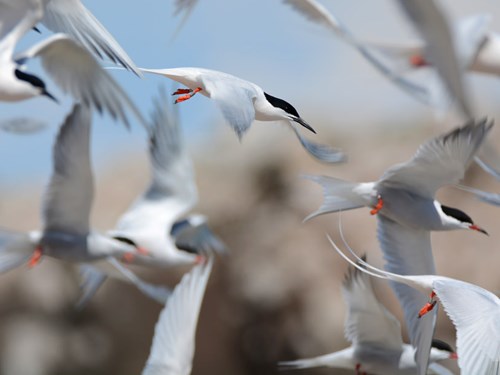
The common tern has a slender body, a smooth, rounded head, and long, pointed wings. Its breeding plumage is light silvery-grey in its upperparts, and clear black outer primaries on its wing tips. Outside the breeding season, the bird keeps some of its distinguishable black cap, but its forehead and face turn white. Its legs and bill turn black, losing their orange-red colour. Admire this bird’s graceful flight, as it hovers over the reservoir before plunging down for its prey. It will also swim as it picks up food from the surface of the water or just below it.
With its long legs and neck, the grey heron can be easily sighted all year round at Hermitage Ponds. Typically, they stand with their neck stretched out looking for food, or hunched down with their neck bent over their chest. Herons nest up high on the trees in an area that is known as their heronry. The heron’s diet consists of fish, as well as small birds and mammals such as voles and amphibians.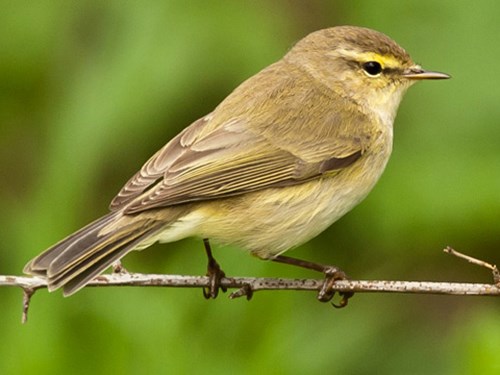
The chiffchaff is a very active bird, constantly flicking its tails and wings while feeding. Chiffchaffs feed on small insects, including caterpillars, gnats, and midges, which are foraged from high in the canopy. They also catch flies in mid-air and hover to pick insects from under leaves. Chiffchaffs begin to arrive in March and depart in October. They are similar to the brightly-coloured willow warbler bird, but have a different song that are a run of notes that sound like ‘chiffchaff, chiffchaff’ repeated many times.
Learning about the natural world and birdwatching is a great hobby for children who love learning to identify different birdsong and plumage. Check out this guide to common birdsong by the Woodland Trust that features many birds that live or spend time at Mill Waters throughout the year.
Nature conservation
Ashfield District Council has developed a management plan for Mill Waters, which aims to conserve the existing wildlife and enable it to flourish. A key aspect of the plan is to improve the natural corridor around the site for small mammals, by cutting back vegetation around the ditches to allow other plants to flourish. This will encourage the water voles and amphibians, including toads and frogs, to spread across the site.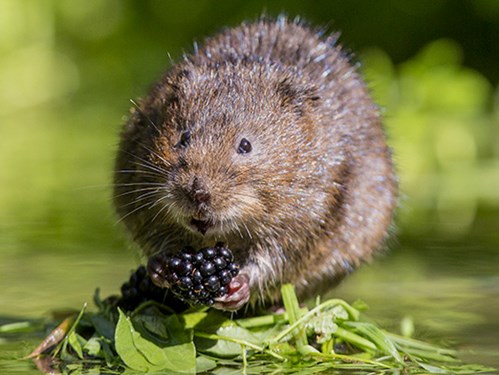
Water voles have a short, rounded body, blunt muzzle, and small ears that are often almost entirely hidden in their thick fur. Their furry tails are about two-thirds of their body length. They are shy creatures and sightings are rare as their burrows are not easy to detect. The burrows are often located along the water’s edge, with some just above or at the water level on steep banks.
You can tell that a water vole is in the area because they are keen gardeners, nibbling down on the grass outside their burrows. They also have a latrine, a dedicated toilet area, outside their living quarters. Droppings are about 1.2cm long and greenish in colour, as opposed to rat droppings that are much bigger and a brown or black colour. Water voles are a protected species as their population has declined due to loss of habitats and pollution. It is crucial visitors do not disturb the habitats of the water voles, as it could be detrimental to their survival.
Water safety
The Mill Adventure Base and clubs at Mill Waters follow strict procedures and risk assessments to allow them to use the water for their activities. The public are not allowed to enter the water or launch their own craft onto the water for leisure or sporting activities. If there are any water quality issues identified, signs will be erected to warn the public that people or their animals must not enter the water. If you see someone in trouble in the water, call 999, and ask for Fire and Rescue. Learn about the national water safety campaign #RespectTheWater.
Love Exploring
Download the Love Exploring App to enjoy a number of interactive nature trails at the Mill Waters heritage site. Visit Google Play store if you use an Android mobile and the Apple store for iPhone.
Website: Nottinghamshire Fire & Rescue on water safety